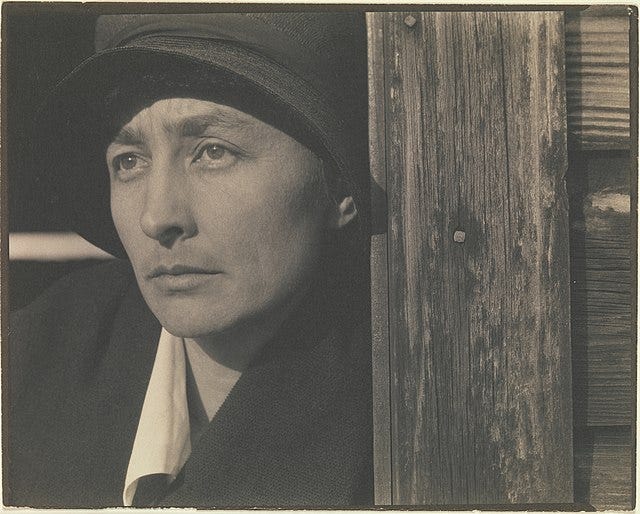When I was growing up on a rural lake in a cold state (New York near Canada), outdoor play required advanced thermal body skills for three-quarters of the year.
Running wild all summer, while coats and boots waited it out in the attic, was when kids had enough time and daylight to focus (really focus) on rocks and insects and minnows and weeds and trees.
We were by nature little pagans, and we didn’t have to grow up and read Eastern philosophy to recognize that all this stuff had force in it. When we watched each fall’s Wizard of Oz reruns, the idea that trees brooded and muttered wasn’t new to us
That’s why Georgia O’Keeffe’s uncompromising ponderosa pine in her 1929 painting The Lawrence Tree has always captivated me, especially when the image is displayed the way she wanted it—“standing on its head,” dizzying us.
I came of age fascinated with the way trees spread out underground at the same time that they do the same thing in the sky. People need to do this, too: root well, plus reach beyond. Georgia lay on her back on a bench to look far enough into the universe that she could understand the pine growing outside D.H. Lawrence’s cabin in New Mexico.
Through the branches of the Lawrence Tree, it wasn’t the daylight with its visible stories she sought. It was the mysteries of the dark and distant, the light you only come to by going out of yourself. Georgia spent a lifetime refusing to see things the way she had been instructed to see them, and her refusal lit up spaces within spaces.
I want those spaces, too. My unexplored reality is different from Georgia’s, but standing the world on its head is the first step in finding it.
Laurinda Lind lives in New York’s North Country, staying out of the way of the global pandemic, but when it was still safe to go out, she once won the Keats-Shelley Prize for adult poetry.
Georgia O’Keeffe (1887-1986) was an American modernist painter best known for her depictions of colorful flowers and New Mexico landscapes. She is recognized as the “mother of American modernism.”


